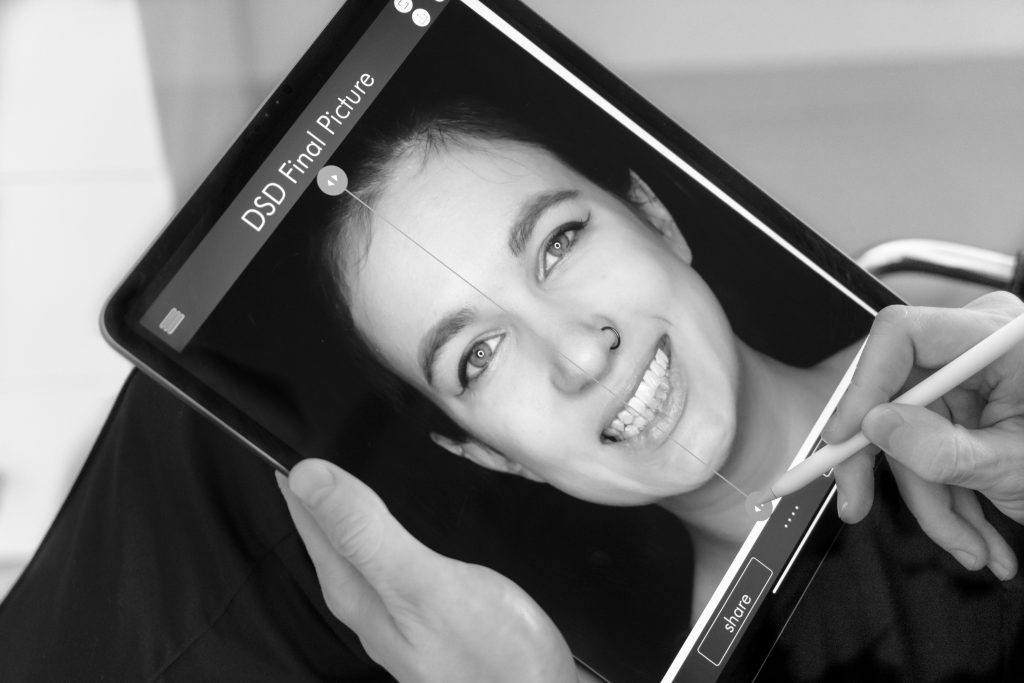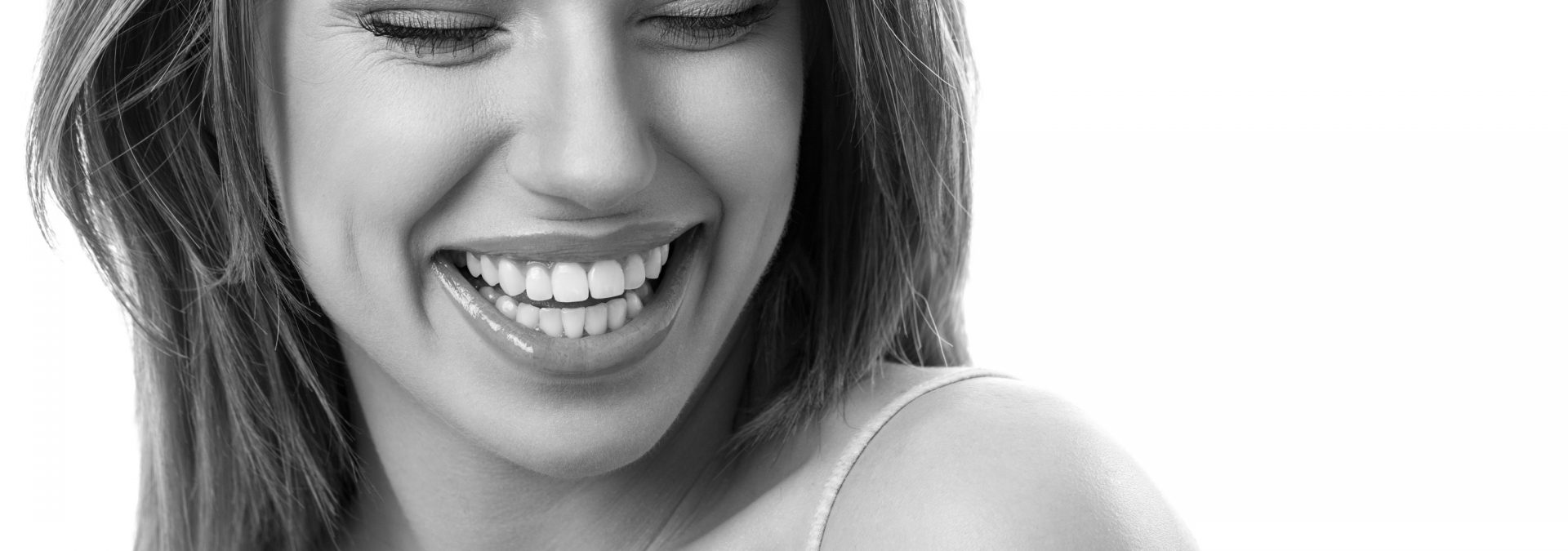Dental veneers are a quick way to a beautiful smile. This aesthetic approach is ideal for people with yellow, chipped or widely gapped teeth. The placement of veneers is a permanent procedure, therefore we advise everyone to consider it carefully before committing to it. It is important that the patient has all the necessary information regarding the expenses and the maintenance of the veneers at the disposal before making a final decision.
What are veneers?
According to the definition of the American academy of cosmetic dentistry (AACD) veneer is a “thin porcelain construction used to rebuild the natural look of teeth and it is as strong and resistant as the real tooth enamel.” Veneers are specifically made to fit the individual shape of client’s teeth and are attached to their natural enamel.
Why are veneers used in cosmetic dentistry?
Veneer placement is a less invasive procedure than the installation of crowns or braces. According to the recommendation of the British dental health foundation, veneers can be used to fix the gapped teeth or small occlusion defects. Patients often choose veneers as a cosmetic solution to whiter and straighter teeth as well as correction of the change in teeth colour or appearance of broken or chipped teeth.
Veneer placement procedure
The procedure is usually executed in one to two sessions. If prefabricated veneers are used one, session is often enough. If veneers are manufactured in the laboratory, two sessions are required. Here we will be focusing on the procedure of placement of porcelain veneers manufactured in the laboratory.
- No local anaesthetic is usually needed before the procedure but if the patient is particularly sensitive it can be administered. First the dentist will perform professional dental hygiene, remove the plaque and determine the right colour shade of veneers.
- Dental impression is taken in the laboratory and a temporary veneer is placed on the tooth by etching the centre points of the tooth, far from the edges.
- After the laboratory administers the porcelain veneer to the dentist the temporary veneer is taken off and the tooth is cleaned with an abrasive paste and water. Then, the surface of the enamel is acid etched, thoroughly cleaned and air dried. At that point the surface is ready for the application of a layer of glue and tooth cement. The veneer is then carefully placed in the manner that mirrors the teeth outline.
- The tooth cement is then left to set for 60 seconds and the whole surface of the veneer is exposed to the light. This will lock the veneer strongly in with the tooth.
- The dentist removes the excess material and polishes the veneer edges.
- Many dental professionals might recommend another checkup to ensure that the veneer is in the correct position.
AACD recommends cleaning the veneer with the toothbrush and also flossing – just as you would be doing with your natural teeth. Veneers should be brushed daily with a non-abrasive fluoride based toothpaste. It is advised to limit the intake of coffee as well as other drinks and products that stain the tooth surface.

Materials and technology
There are two main types of veneers: composite and ceramic. The composite veneer can be directly made (in the dentist’s chair in one sitting) and indirectly made (in the dental laboratory.)
Ceramic veneers
Various types of ceramics are used to manufacture veneers. The most used ones are LFC ceramic (porcelain) and glass ceramic IPS Emax. Less often, ceramic veneers are made out of blocks of zirconium oxide. Ceramic veneers are manufactured exclusively by the laboratory method. First the dentist prepares the tooth surface by filing it down, then takes the dental impression which is sent to the dental laboratory where the permanent veneer is manufactured and sent back to the dentist within two weeks. So as the patient’s filed down tooth is not exposed in the meantime, temporary veneer is placed on the tooth. Now we will have a closer look at some main types of ceramic veneers.
Feldspathic (porcelain) veneers
The first ceramic veneers were made of porcelain. This type of ceramic allows for perfect simulation of the optic attributes of real teeth (the shade and translucency of enamel.) Porcelain veneers are of great aesthetic quality. There are three different laboratory methods by which these veneers can be manufactured. First method is based on stacking the layers of the porcelain slurry. Each layer of porcelain is sintered at a high temperature in a professional oven. Second is based on the procedure of mould pressing the porcelain at high pressure and temperature. The third, most recent method, consists of milling the feldspathic ceramic blocks with a CEREC device.
The flexural strength of facets or veneers when the layering method is used is only 50 – 70 MPa. When the extrusion (pressing) or CAD/CAM method is used, the flexural strength will be at around 150 Mpa. The material should be resistant enough if the patient has a proper bite alignment and no bad oral habits. However, we will now take a look at an even stronger type of ceramic available.
Glass-ceramic veneers IPS Emax
Glass-ceramic IPS Emax (produced by Ivoclar Vivadent) is made out of lithium disilicate crystals which have the same translucent quality as the real tooth enamel. That is why veneers made of this material are the closest you can get to real teeth aesthetics. There are two types of IPS Emax material. First type is Emax PRESS, this material is mould pressed to make veneers. This is the most durable kind of veneers – their flexural strength is around 400 MPa which makes them almost impossible to fracture. The so called “thin veneers” are made out of Emax PRESS and they are only 0,3 – 0,4 mm wide (standard ceramic veneers are around 0,6 – 1,0 mm wide). The second type of IPS Emax glass-ceramic is a material called E.max CAD which is manufactured in the form of special blocks that are made to be milled by a CEREC type devices (CAD/CAM technology). The same method is used to process the next type of veneers – zirconia. Emax CAD veneers are also very durable, their flexural strength being around 360 MPa but the nature of the material doesn’t allow the veneers to be made thinner than 0,6 mm.
Zirconia based veneers
Zirconia veneers are made by milling the blocks of zirconium oxide (CAD/CAM technology). The strength of these veneers directly depends on the type of zirconium oxide blocks that are being used. If the blocks of the so called raw and malleable zirconium oxide are being used, the flexural strength of veneers will be around 900 MPa. However, these veneers will be lacking in the aesthetic quality due to the lack of translucency to this material and its milky white colouring. If the blocks of zirconia oxide which have been partially stabilised by yttrium are being used, the veneers will be translucent and of a good aesthetic quality but their flexural strength will be lower (around 550 MPa).
If we compare the materials in terms of aesthetic quality of the end product, zirconia veneers are inferior to porcelain ones (ceramic resin) as well as to IPS Emax. Clinical studies have shown that in terms of aesthetic quality, the closest to IPS Emax ceramic is Katana UTML (Japan), Katana STML (Japan), BruxZir Anterior or Prettau Anterior (Germany).

Composite veneers
The procedure begins with the dentist sanding down the thin layer of enamel, then layering the composite filling material using the adhesive systems. These types of veneers are sculpted directly on the teeth and their lifespan ranges from 3 to 5 years. Composite veneers are mostly used to repair one or two teeth from the row. These composite veneers can be also fabricated in the laboratory. Dental impression is taken according to which a model is built and veneer is created. The veneer is then polymerised in the special laboratory oven. At the clinic, this veneer is fixed into the liquid composite. The advantage of this technique compared to the direct veneer sculpting is the full polymerisation of the composite, which, in consequence, makes for a stronger veneer.
Other information:
Veneer prices are created individually and they may vary according to doctor’s qualifications, duration of the procedure and the ranking of the clinic.
The lifespan of veneers is roughly 10 years. Statistic showed as little as 10 % failings in a 10 year observation period.
There is a possibility to demonstrate the final aesthetic result, “a smile change”, to the client even before initiating the reconstructive procedure. This is a so called Digital Smile Design or DSD.
Cosmetic dentistry is turning into an aesthetic approach focused on the individual needs of the customer.

